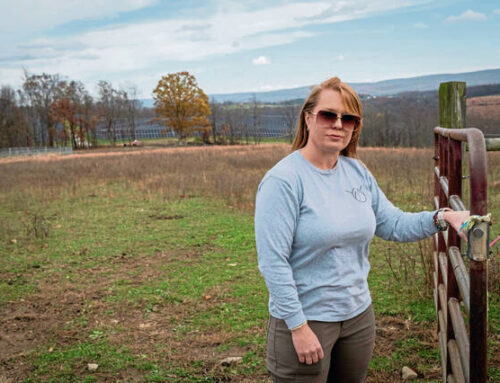Smoke smart? Ohio consumers and dispensaries can cultivate a quality cannabis experience
April 4, 2025
More than 100 new marijuana dispensaries are slated to open in Ohio in 2025, according to the state’s division of cannabis control. This adds to the 124 storefronts already in place, ideally attracting an influx of new and veteran consumers. Newbies in particular will be asking about what constitutes “quality cannabis,” a question that proprietors like Klutch Cannabis are prepared to answer.
“We fight the general idea that THC potency is everything, like that’s the end-all, be-all of determining whether a product is high quality or not,” said Pete Nischt, chief compliance and communications director for Klutch, an Akron cultivator with dispensary locations in Lorain and Canton, and forthcoming storefronts in downtown Cleveland and Northfield Village. “A lot of consumers, especially in the beginning, will say I want the most potent thing you have. What they’ll get is the highest THC content, but that doesn’t tell the whole story.”
THC, the psychoactive component of cannabis, produces a “high” when consumed through smoking, vaping or edibles. Yet, THC concentration is only one attribute of overall product quality. Terpenes, another chemical compound found in cannabis, contribute to how the plant tastes or smells, said Nischt.
“We’re still exploring this, but we know there are hundreds of compounds in the cannabis plant that exist in different quantities,” Nischt said. “Even things that exist in just nominal quantities may lend themselves to that kind of subjective experience when using the product.”
Understanding the plant’s value
Klutch has welcomed hundreds of new customers since Ohio’s recreational debut last August. Conversations at dispensaries among patrons and staff revolve around flavor, aroma or the quality of a product’s active ingredients. Ultimately, these discussions are designed to empower consumers, said Nischt.
“The baseline question is what’s your experience with cannabis?” Nischt said. “Are you an experienced user? What product forms do you use? Do you only eat edibles? Do you use flower products exclusively, and if you do that, do you smoke them, or do you vape them? What kind of devices are you using?”
Additional queries may touch on strain preferences, flavor profiles and desired outcomes. Tim Johnson, a long-time lobbyist and former law enforcement officer who advised the Ohio legislature on the state’s 2023 marijuana legalization initiative, said misconceptions arise from consumers who simply don’t understand the plant.
To that end, Johnson has presented language to the Ohio Legislative Service Commission – a nonpartisan arm of the state general assembly – that would require detailed labeling on all cannabis products. Under this guidance, product packaging would include active and inactive ingredients – cannabinoids, terpenes and flavonoids, along with various additives, sugars and dyes.
In the interim, Johnson continues to battle the sensationalism that first manifested during the cannabis hysteria of the 1930s.
“We have to recognize we’ve all been misguided about the ‘problems’ of cannabis, as far as it’s a violent drug that creates violent tendencies,” said Johnson. “That it creates heart and lung problems, that type of stuff. There’s a lot of misconceptions there.”
Consumers can get reliable information from budtenders – retail associates who work the dispensary floor – and studying reputable online resources. New users can also identify specific metrics to assess cannabis quality, Johnson said.
For instance, you can tell much about high-grade marijuana simply by its appearance, Johnson said. Top-shelf buds are deep green in color with red, orange, purple, or blue hairs. Cannabis flowers with a light green color may suggest premature harvesting, while dark green or brown may indicate a product past its peak.
“I look for a sweet, clean smell that dominates a fresh plant,” said Johnson. “The plant has a good texture, it’s got some stickiness to it when I squeeze it between my fingers instead of crumbling like dust. And you want something with a smooth inhalation draw, not something with a draw where you’re coughing your brains out.”
A wealth of information
For edibles like gummies, buyers should ask if THC was infused or sprayed on top of a product, as the method of infusion can impact potency, Johnson said. Customers can also talk to budtenders about dosing, although the general rule for smoking is to “start low and go slow.”
“You have to consider how long a person has been consuming, and how long they’ve been consuming daily,” he said. “A dose of five milligrams is reasonable, then let that take effect and see what happens. See if you achieve the reaction that you needed.”
This principle also applies to gummies, which are available in a wide range of potencies. However, edibles including gummies exhibit a delayed onset (45 minutes to two hours) compared to the rapid effects of vapes and concentrates (10-15 minutes), noted Pete Nischt of Klutch Cannabis.
Edibles are likely the best entry point for the “canna-curious” or recently returning users, he added.
“For these users, we’re looking for products that are at lower potency with a predictable dose,” Nischt said. “While we do make high-dose edibles, we have multiple lines of lower-dose edibles, like microdose mints with 2.5mg of THC. I’d feel comfortable giving those to anyone who’s curious and of legal age. You’ll get a little taste of what the drug will do to you.”
Educational resources are readily available for people new to Ohio’s expanding recreational market, Johnson said. Ohioans can earn a Ganjier trade certification from Green Flower, a California cannabis sommelier certification for budtenders, buyers or dispensary teams. Ultimately, the program aims to cultivate individuals with comprehensive, in-depth knowledge of their company’s product line.
Would-be cannabis employees can also attend workshops at the Ohio Cannabis Health & Business Summit , which has brought vendors, speakers and industry leaders to the International Exposition Center every October for the last five years.
Within the cannabis industry, professional budtenders undergo continuing education, completing 16 credit hours every two years under the supervision of a designated dispensary employee. Put simply, a wealth of information awaits both novice and experienced cannabis enthusiasts, Johnson said.
“Get on the internet and look for the researchers that are out there,” he said. “(Experts) are the one thing the cannabis community doesn’t have a shortage of. We’re not here to have somebody rushed into the hospital because they had too many gummies and feel like they had a bad experience.”
Search
RECENT PRESS RELEASES
Related Post




